Om, 1925; Sputnik, 1964), Iran (City-Language, 1959), Nigeria (Guosa, 1981), and Vietnam (Frater, 1957).
If an inventor had multiple languages, I sometimes admitted only one—Weferling’s Intal (1956) made it in, but not his Intal II (1964) or III (1968)—but for especially prolific inventors I might include the whole bunch. (Hats off to Petr Stojan, who gave us, over the years from 1911 to 1926, Spiranta, Aryana, Ariana, Amiana, Liana, Unita, Espo, and Eo.)
Dulichenko’s list goes only as far as 1973. Past 1973, I simply included languages I had heard of or seen myself in libraries. The criteria for dating a language require some explanation. Generally, the year given for a project represents the initial date of publication in an article or a book. I date Tolkien’s languages, for example, as 1955, even though he had already been working on them for forty years by that point, because that is when he first published information about them (in the appendix to the third book of
The dating of languages in the Internet age gets even more complicated. The years given for most of the languages I list from 1990 on represent (approximately) the first posting about the language on the Web, in a newsgroup, or on a site dedicated to the language. The “conlangs” or “artlangs” I have listed here amount to a vanishingly tiny portion of the number that are out there. Sites like Langmaker.com list hundreds of them. On forums like the “zompist” bulletin board (www.spinnoff.com/zbb ), new languages are born every day. I have listed only the projects that I mention in the text, along with a few other especially noteworthy or well-developed ones— languages that most of the highly regarded conlangers will have heard of.
Samples of various languages are given in appendix B. You can sort this list by language name or author, and see further information about some of the languages and their inventors at inthelandofinventedlanguages.com .
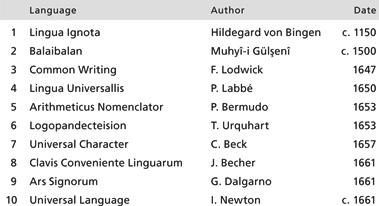

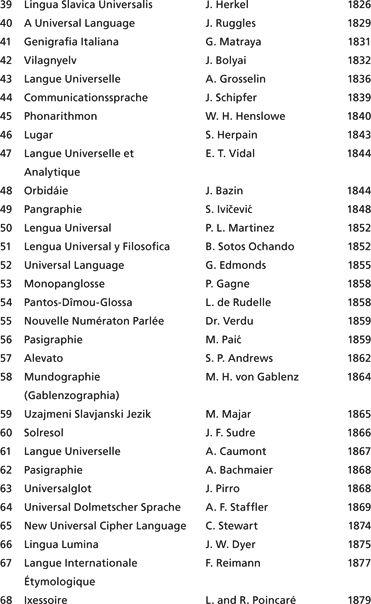
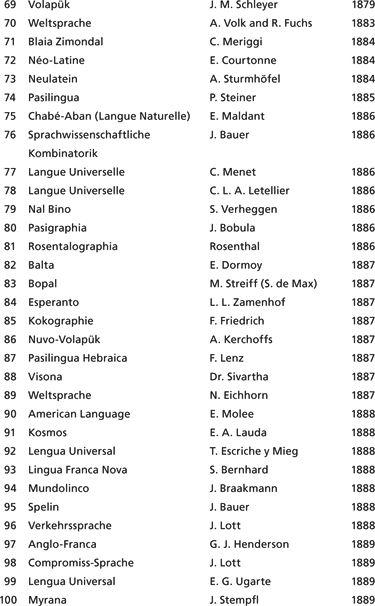


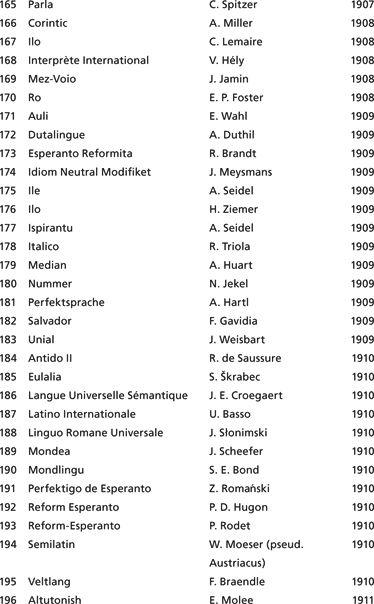
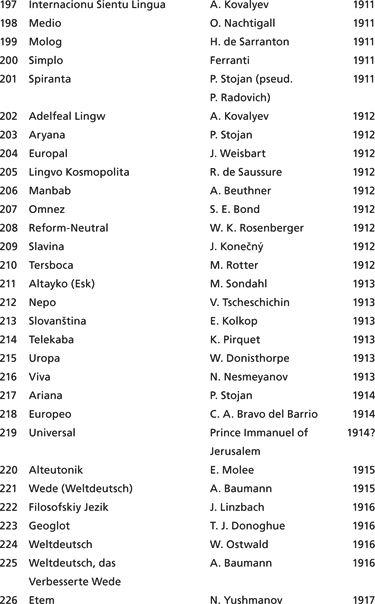
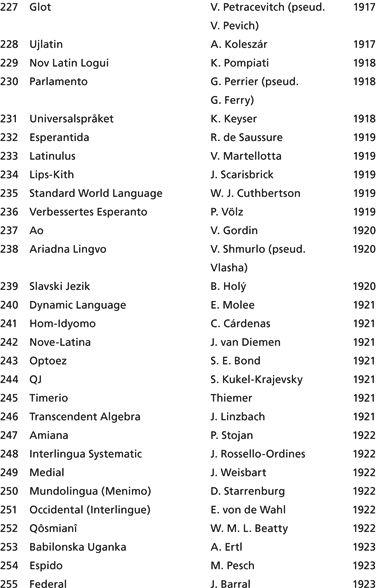


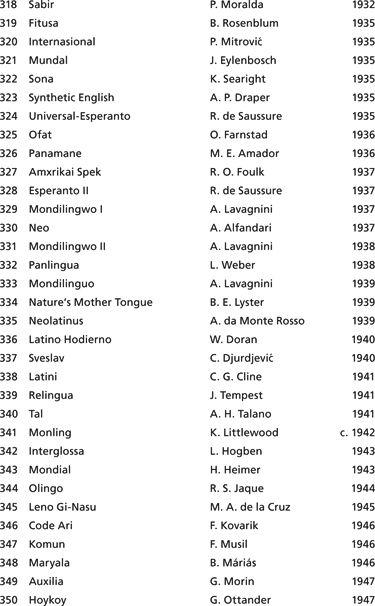
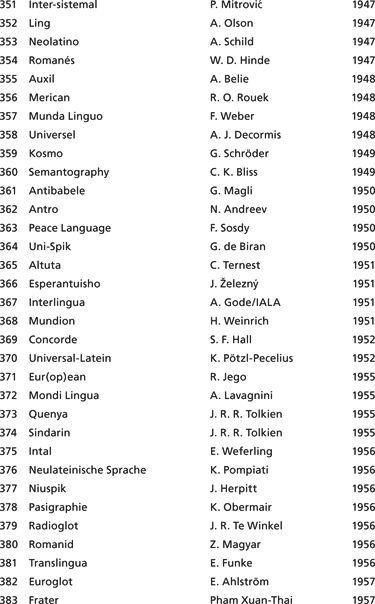
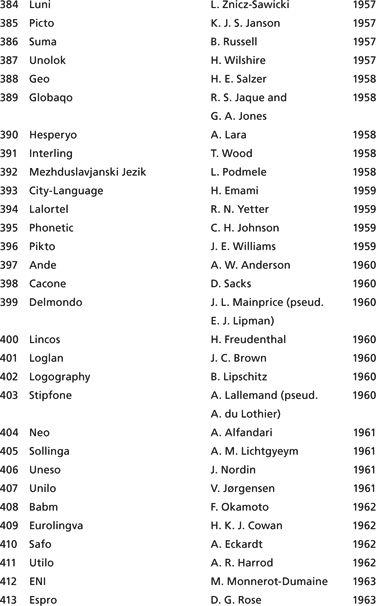
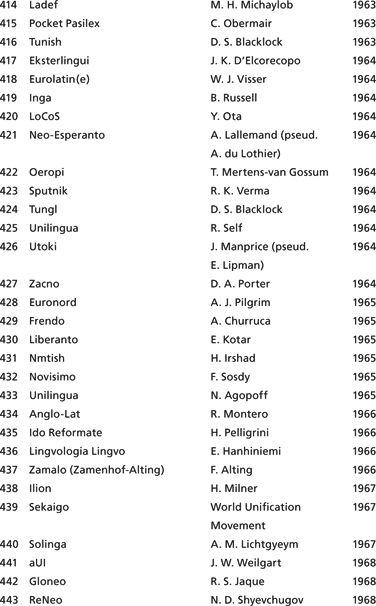
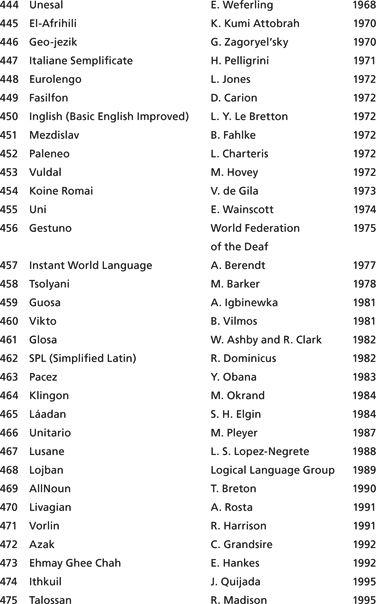
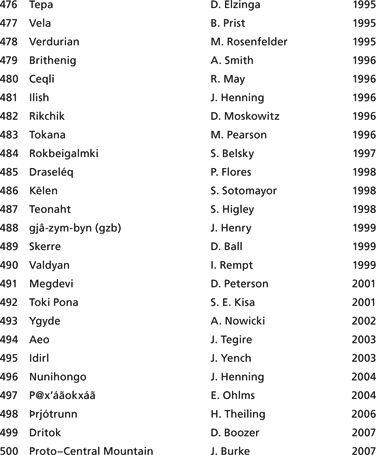
The List of Languages

Works on invented languages usually classify the languages into three categories. Languages like that of Wilkins, which are completely created from scratch, are called a priori languages. Languages like Esperanto, which take most of their material from existing natural languages, are called a posteriori languages. Languages like Volapuk, which contain elements of both types, are categorized as mixed. There isn’t always total agreement on which category a particular language should be in (especially for mixed languages), but you can usually tell what type a language falls under just by looking at it. Here are some examples:
A priori
Luftlandana (Larsson, 1893)
“We have invented a new language. We have seven moments of rest daily.”
MIXED
Bolak, La Langue Bleue (Bollack, 1899)
“What an immense advantage for mankind, if from people to people we could communicate through the same language.”
A POSTERIORI
Medial (Weisbart, 1922)
“An Englishman, a Frenchman, and a German were supposed to paint a camel. The Englishman traveled to Africa to study the camel in its habitat. The Frenchman went to the zoo, and the German painted a camel out of the depth of his psyche.”
THE LORD’S PRAYER

